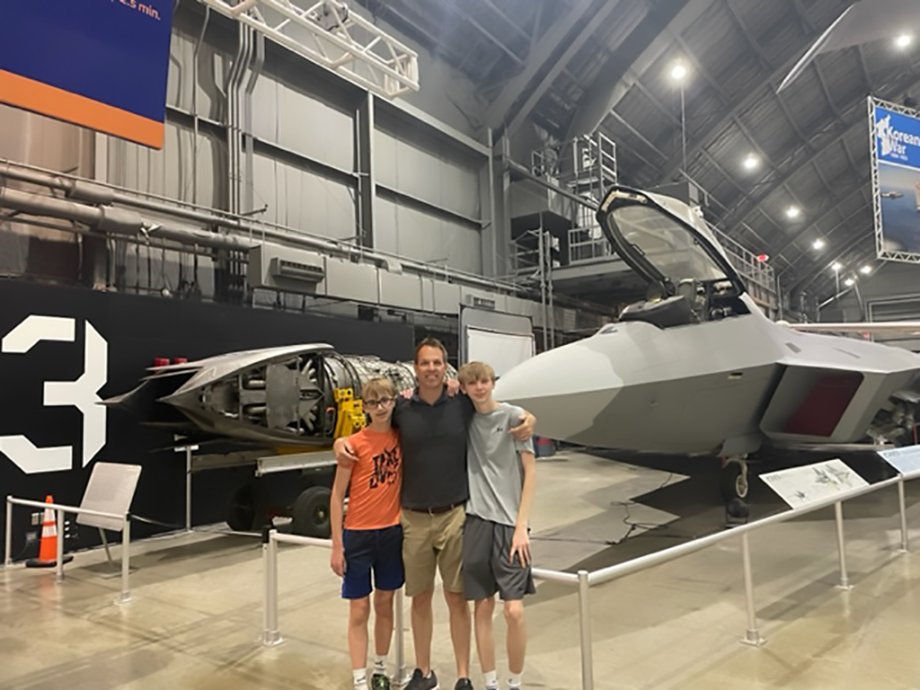
For the third time in as many years, mechanical engineering faculty member Jeffrey Doom was selected for the Summer Faculty Fellowship Program through the U.S. Air Force Office of Scientific Research.
The Jerome J. Lohr College of Engineering associate professor was assigned to work at a unclassified research lab at the Air Force Research Laboratory near Dayton, Ohio, with Timothy Ombrello, a senior research aerospace engineer there.
Doom, whose area of expertise is computational fluid dynamics, built off his first two years with his 2023 project “Combustion Enhancement in High-Speed Flows.” All the work has been done by computer simulation and is part of an overall goal to build higher speed jet engines.
During his 2021 and 2022 summer fellowships, Doom and then-SDSU doctoral student Zach Chapman wrote a computational fluid dynamics computer code that could be used to operate engines at hypersonic speeds, which is five times the speed of sound. This summer Doom, minus Chapman, who is working for an aerospace company in Alabama, studied the temperature intensity of the flame in engines capable of hypersonic speeds.
“We wanted to compare our simulation data to experimental data from the Air Force Research Lab,” Doom said. While Doom worked from behind a computer, and sometimes remotely from Brookings, during the time he was at the Air Force Research Lab he was able to watch some of the Air Force’s testing of the stand-alone engine.
“I saw a lot of cutting-edge experiments. It was fun seeing what was being developed. I met a lot of interesting people. Everyone was kind and friendly,” Doom said of the Air Force researchers.
He hopes to be selected for follow-up research in summer 2024. “This will be going for another five years or so,” Doom said. The next phase will be radiation and soot modeling in hypersonic jet engine emissions. Doom and Chapman have written a computational fluid dynamics code that can help understand the physics of a hypersonic (scramjet) engine (scramjet).
Through the summer research program, he has authored three conference papers and a journal article with his Air Force Research Lab partners, and he is working on another conference paper and journal paper.
Doom also said the lessons he has learned at the Air Force Research Lab can be applied to the courses he teaches in gas dynamics, air dynamics and turbomachinery.
- Contact:
- Telephone number: 605-688-4538
Republishing
You may republish SDSU News Center articles for free, online or in print. Questions? Contact us at sdsu.news@sdstate.edu or 605-688-6161.

